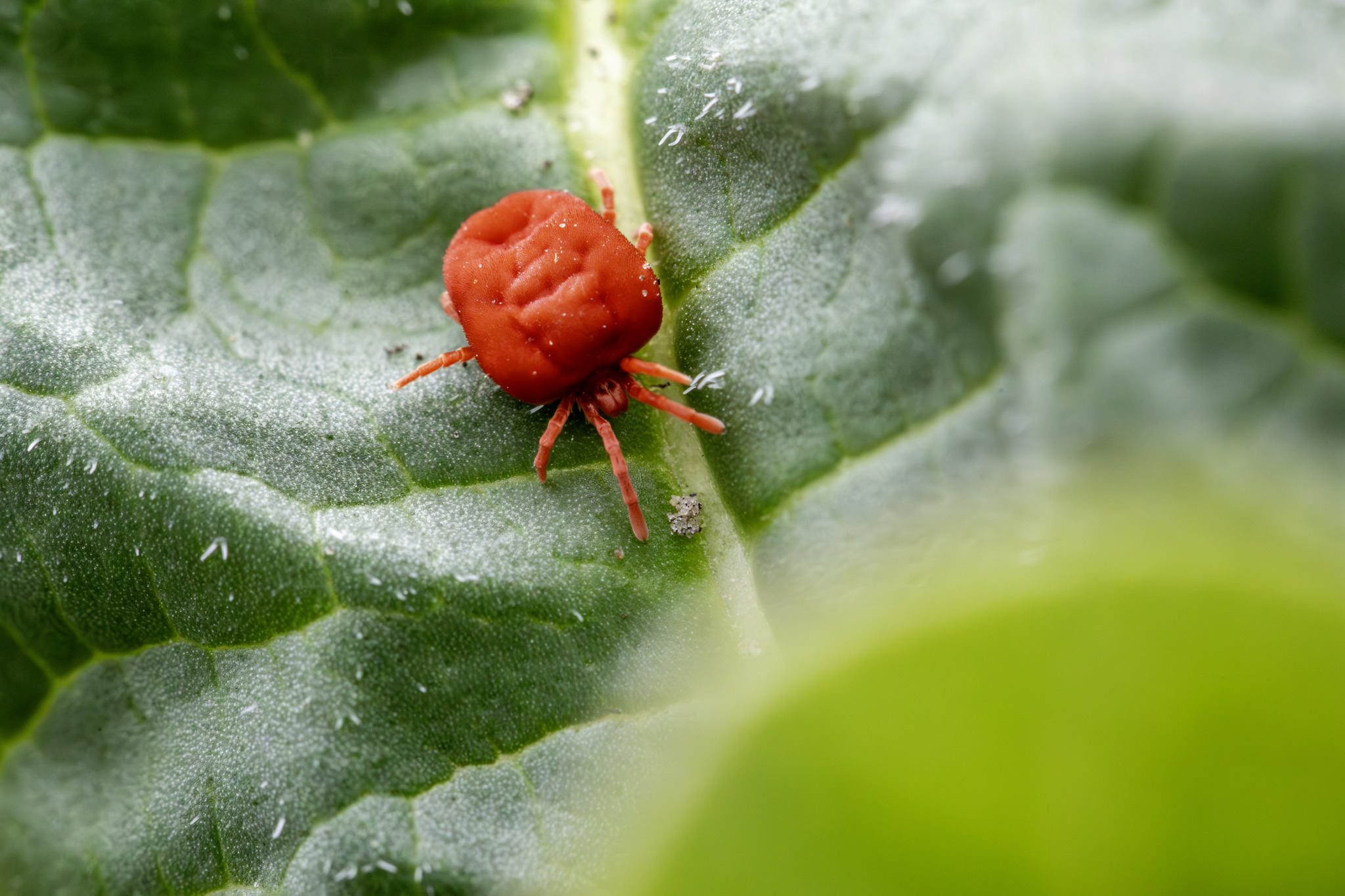The Clover Mite (Bryobia praetiosa) is a species of tiny, red-colored mite belonging to the family Tetranychidae. Here are some key features and characteristics of the Clover Mite:
- Appearance: Clover Mites are very small arachnids, with adults typically measuring about 0.75 millimeters (0.03 inches) in length. They are oval-shaped and have a bright red to reddish-brown coloration. Unlike many other mites, Clover Mites have long, slender legs, which are often visible when they move.
- Habitat: Clover Mites are commonly found in grassy areas, fields, lawns, gardens, and agricultural fields. They are often associated with clover plants, but they can also be found on a variety of other vegetation, including grasses, weeds, and ornamental plants.
- Diet: Clover Mites are plant feeders and are considered to be herbivorous pests. They use their piercing-sucking mouthparts to extract sap from the leaves, stems, and other parts of plants. While they primarily feed on clover plants, they may also infest a wide range of other plants, including grasses, ornamentals, and agricultural crops.
- Lifecycle: Clover Mites undergo simple metamorphosis, consisting of egg, nymph, and adult stages. Females lay eggs in the soil or in protected crevices on plants. The eggs hatch into six-legged nymphs, which molt several times before reaching adulthood. The entire lifecycle from egg to adult can be completed in a few weeks, depending on environmental conditions.
- Behavior: Clover Mites are typically active during the spring and fall when temperatures are moderate. They tend to become more abundant during periods of warm, dry weather, and they may become problematic when they invade homes in search of moisture or shelter. Clover Mites do not bite humans or pets and are not known to transmit diseases.
- Population Explosions: Clover Mites are known for their ability to reproduce rapidly under favorable conditions, leading to population explosions. Large numbers of Clover Mites may suddenly appear on walls, windows, or other surfaces of buildings, particularly on sunny days when they are seeking warmth and moisture. While they do not cause structural damage, their presence can be a nuisance.
- Control: Controlling Clover Mites can be challenging due to their small size and rapid reproduction. Cultural practices such as maintaining well-manicured lawns and reducing excessive moisture around buildings can help reduce Clover Mite populations. Insecticides may be used as a last resort, but they are often ineffective and may have unintended consequences for non-target organisms.
Overall, while Clover Mites are considered to be nuisance pests, they play a role in ecosystems as herbivores and decomposers. Understanding their biology and behavior can help homeowners and pest control professionals manage infestations effectively while minimizing environmental impact.
Visited 931 times, 2 visit(s) today
Views: 1125
Subscribe to the newsletter:
